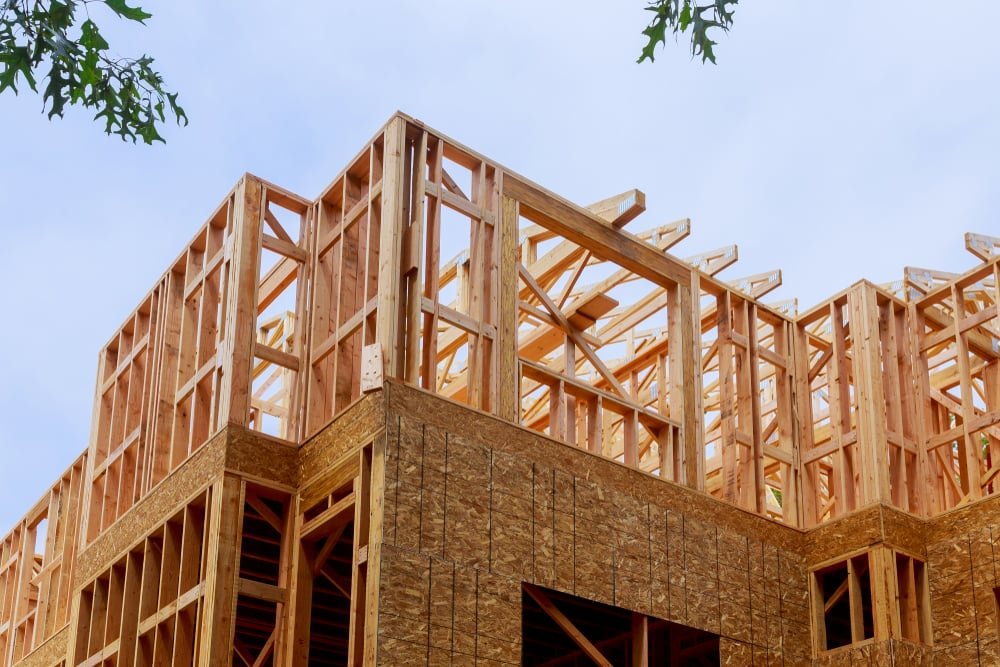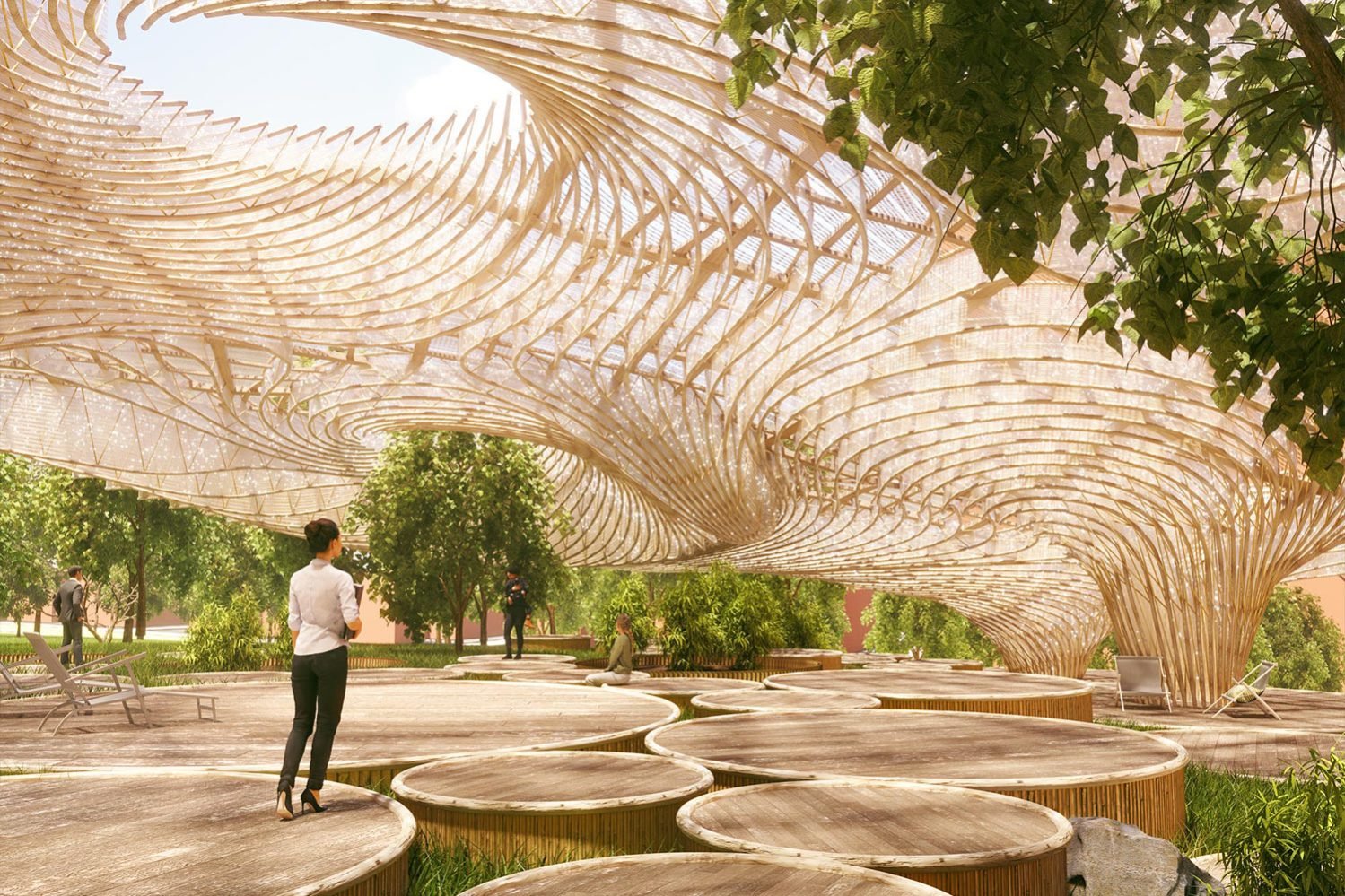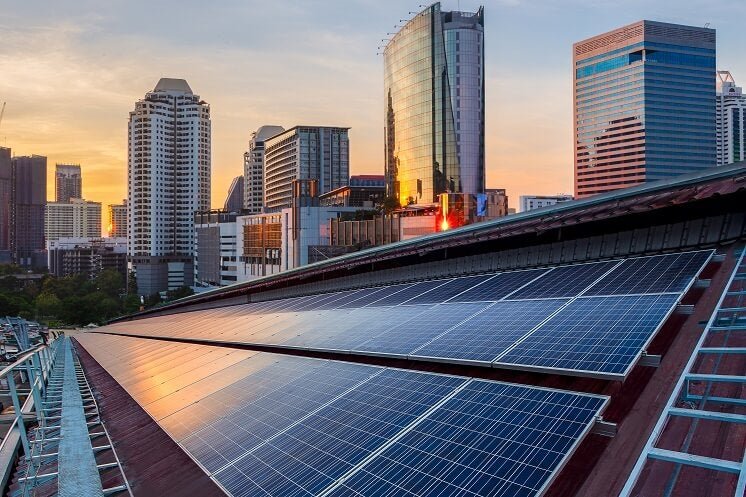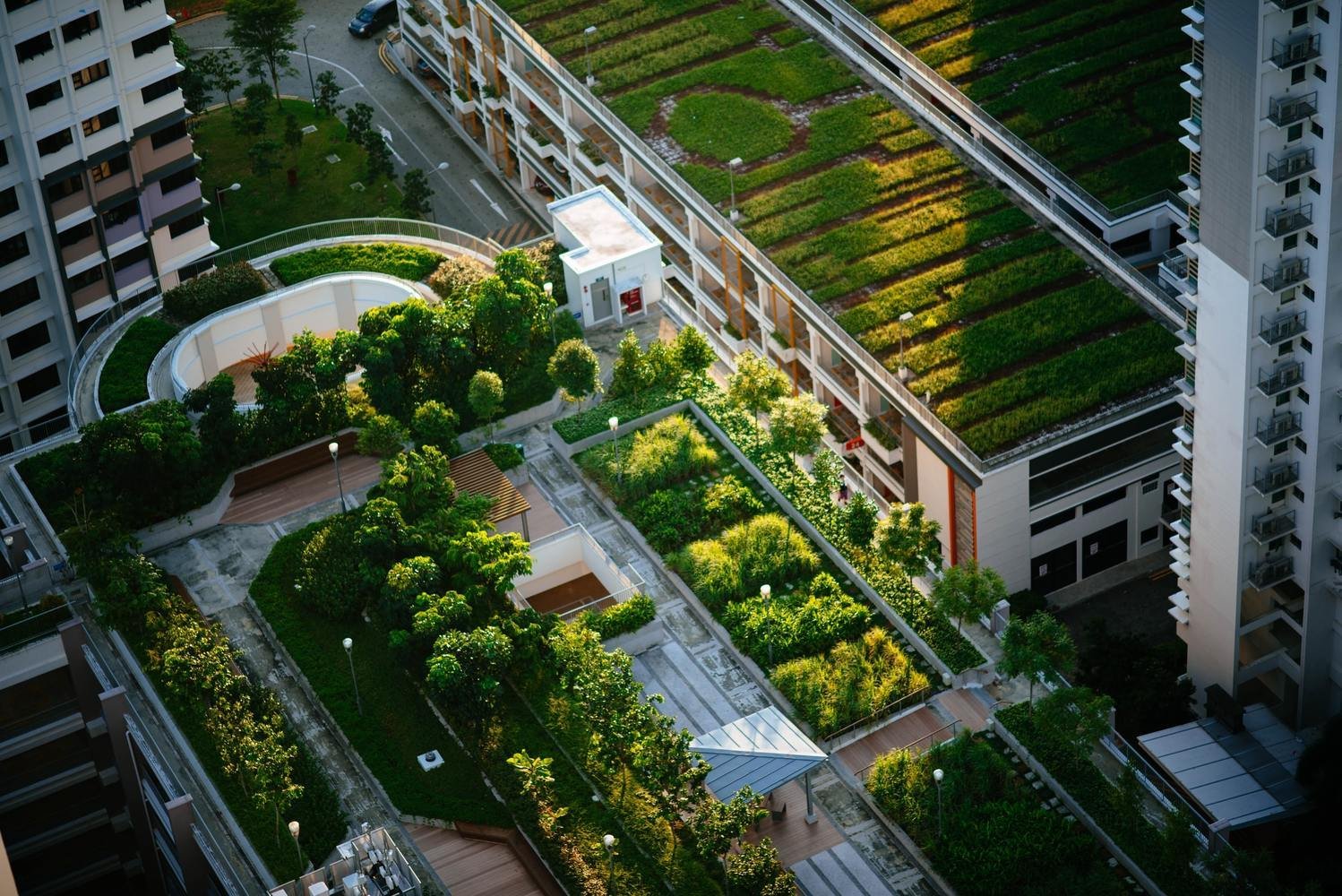Get your eco-friendly groove on: Green design for a sustainable and stylish future


· 9 min read
This article is part of an educational series to spread free & quality sustainability knowledge for all.
Are you looking for ways to reduce your carbon footprint and contribute to a more sustainable future? Well, you've come to the right place! In this article, we'll be exploring the exciting world of green design and sharing some tips on how you can incorporate sustainable practices into your design projects.
Green design, also known as sustainable design or green building, involves the use of sustainable and eco-friendly practices in the design process to minimize harm to the environment. This includes the use of eco-friendly building materials, reducing energy consumption, and finding ways to incorporate renewable energy sources.
Green design is all about sustainability and finding ways to reduce our impact on the environment. By incorporating eco-friendly practices into the design process, we can help to create a more sustainable future for generations to come.
It's a necessity that we all need to work towards. With climate change, global warming, and the depletion of natural resources, it's high time we make some changes in our lifestyle and make a conscious effort to preserve our planet.
Let’s explore the characteristics that make Green design Eco-tastic:

One of the essential elements of green design is the use of sustainable materials. This means choosing materials that have been responsibly sourced, have a low environmental impact, and can be reused or recycled.
For example, instead of using traditional building materials like concrete and steel, consider using materials like bamboo, straw bale, or reclaimed wood. These materials not only have a lower environmental impact but also add a unique and natural element to the design.

Green architecture is another critical aspect of green design. This involves designing buildings that are energy efficient and use renewable energy sources like solar or wind power.
When designing a building, consider its orientation, shape, and layout to maximize natural light and ventilation while minimizing energy use. Features like green roofs, living walls, and rainwater harvesting systems further reduce the building's environmental impact.
Reducing waste is another important element of green design. This involves designing with the end-of-life of a product in mind and ensuring that materials can be reused or recycled.
One way to reduce waste is to use recycled materials in your design. For example, using reclaimed wood or recycled plastic in your products can reduce the amount of waste that ends up in landfills.
Energy efficiency is a crucial component of green design and sustainability. By designing with energy efficiency in mind, you can not only reduce the amount of energy needed to power a building or product, but also protect the atmosphere and achieve economic benefits.

When creating new products or structures, it is important to consider energy-efficient features. This can include using energy-efficient lighting, HVAC systems, and appliances, as well as incorporating features like passive solar heating and cooling or green roofs. By incorporating these concepts into the development process, you can achieve a more sustainable and energy-efficient design while also addressing the challenges of today's economic and environmental landscape.
Finally, when designing, it's important to consider the environmental impact of your project. According to a report by the United Nations Environment Programme, (UNEP) buildings' energy demand climbed by almost 4% from 2020 to 135 EJ, the most in the past ten years. CO2 emissions from building activities have hit an all-time high of around 10 GtCO2, representing a 5% rise from 2020 and a 2% increase from the previous record in 2019.

By incorporating green design principles into the construction process, we can significantly reduce this figure. This includes the use of natural resources, the emissions produced during manufacturing and transportation, and the end of life of the product.
By using sustainable practices and materials and designing with energy efficiency in mind, you can minimize the environmental impact of your project and contribute to a more sustainable future.
The world of green design is constantly evolving as new materials, technologies, and practices are developed. Here are some examples of how innovation is driving sustainable design forward:
In recent years, there has been a surge in the development of new sustainable materials. For example, mycelium-based materials made from mushroom, algae-based plastics, and bio-based composites made from agricultural waste are all promising alternatives to traditional materials.
Advancements in sustainable architecture are also driving the green design movement forward. For example, buildings that generate their energy through solar or wind power, or that are designed to capture and reuse rainwater, are becoming more common. In addition, green roofs and living walls are increasingly being used to add natural elements to buildings and help reduce their environmental impact.
Technology is also playing a significant role in advancing sustainable design. For example, the use of building automation systems can help optimize energy use by automatically adjusting lighting, temperature, and other factors based on occupancy and time of day. Similarly, the use of 3D printing technology can reduce waste in the manufacturing process by allowing for more precise and efficient production.
Green design is becoming increasingly important as we face the challenges of climate change. Designers and engineers have a crucial role to play in creating sustainable solutions for the built environment. In fact, according to a survey by the American Institute of Architects,79% of architects want to specify ecologically conscious products and resources more than they do currently.
Designers and engineers can use sustainable processes and materials to construct buildings, products, and infrastructure that minimize their impact on the environment.
The industry is also evolving to incorporate green design principles. In 2018, the global green building materials market was valued at $223 billion and is expected to reach $527 billion by 2027. As more companies and consumers demand sustainable solutions, designers and engineers have an opportunity to lead the way in creating a more sustainable future.
Creating a sustainable future requires a commitment to innovation and collaboration. This means working together to find new and better ways to design buildings that are both sustainable and stylish.
While green design principles and sustainable practices are important for achieving a more eco-friendly future, individual action is also crucial. By making small changes in our daily lives, we can reduce our environmental impact and contribute to a more sustainable world.
This can include simple actions like turning off lights and electronics when not in use, using public transportation or carpooling, and reducing our consumption of single-use products. By taking individual action and encouraging others to do the same, we can create a groundswell of support for sustainable practices and green design.
In addition to individual action, collective action is also critical for creating meaningful change. By joining together and advocating for policies and regulations that promote green design and sustainable practices, we can create a more sustainable and equitable world for all.
This can include supporting organizations and initiatives that promote sustainable practices, participating in grassroots campaigns and advocacy efforts, and engaging with our elected officials to promote environmental policies.
Taking individual and collective action, we can create a groundswell of support for sustainable design, leading to a better future for ourselves and future generations.
LEED stands for Leadership in Energy and Environmental Design. It's a certification program that promotes sustainable building practices and recognizes buildings that meet certain environmental standards. Think of it as a gold star for being eco-friendly!
There are many examples of green design, from buildings that use solar panels to generate their electricity to products made from recycled materials. One great example of green design is the LEED Platinum-certified Bullitt Center in Seattle, which uses rainwater for all of its water needs, generates its power using solar panels and a wind turbine, and even composts its waste on-site.
The five major elements of green building design
By focusing on these areas, designers and builders can create buildings that are not only good for the environment, but also comfortable, healthy, and cost-effective for occupants.
Green buildings offer a wide range of benefits, from lower energy and water bills to improved indoor air quality and occupant health. Three key benefits of green buildings are reduced environmental impact, improved occupant productivity and well-being, and long-term cost savings.
The three goals of green and sustainable design are to minimize the environmental impact of buildings and products, promote social and economic equity, and improve human health and well-being. By achieving these goals, designers and manufacturers can create products and buildings that are not only good for the planet, but also good for people.
Green architecture, also known as sustainable architecture, incorporates several features and practices that promote sustainability and energy efficiency. Five common characteristics of green architecture are the use of renewable energy sources, the incorporation of green roofs and other natural features, the use of sustainable materials and building techniques, the integration of natural lighting and ventilation, and the use of water-saving fixtures and appliances.
Green design is an exciting and essential aspect of the construction industry that can have a significant impact on the environment and future generations. By using sustainable materials, designing with energy efficiency in mind, and reducing waste, we can create a built environment that minimizes our impact on the planet while also providing comfortable and healthy spaces for people to live, work, and play.
As designers, engineers, and architects, we have the power to create a sustainable and stylish future for ourselves and future generations. So, let's get our eco-friendly groove on and start designing for a better planet!
Wikipedia contributors. (2023c). Sustainable design. Wikipedia. https://en.wikipedia.org/wiki/Sustainable_design
Mastercard. (2021, April 13). Mastercard global study shows that post pandemic, the planet comes first. Mastercard Newsroom. https://www.mastercard.com/news/europe/en-uk/newsroom/press-releases/en-gb/2021/april/mastercard-global-study-shows-that-post-pandemic-the-planet-comes-first/
2022 Global Status Report for Buildings and Construction. (n.d.-b). UNEP - UN Environment Programme. https://www.unep.org/resources/publication/2022-global-status-report-buildings-and-construction
Research reveals the role of specifications in sustainable design. (n.d.). AIA. https://www.aia.org/articles/6325995-research-reveals-the-role-of-specification
Steve Harding

Tourism · Wellbeing
illuminem briefings

Design · Architecture
illuminem briefings

Sustainable Living · Climate Change
CNN

Architecture · Design
World Economic Forum

Nature · Cities
CNN

Adaptation · Architecture